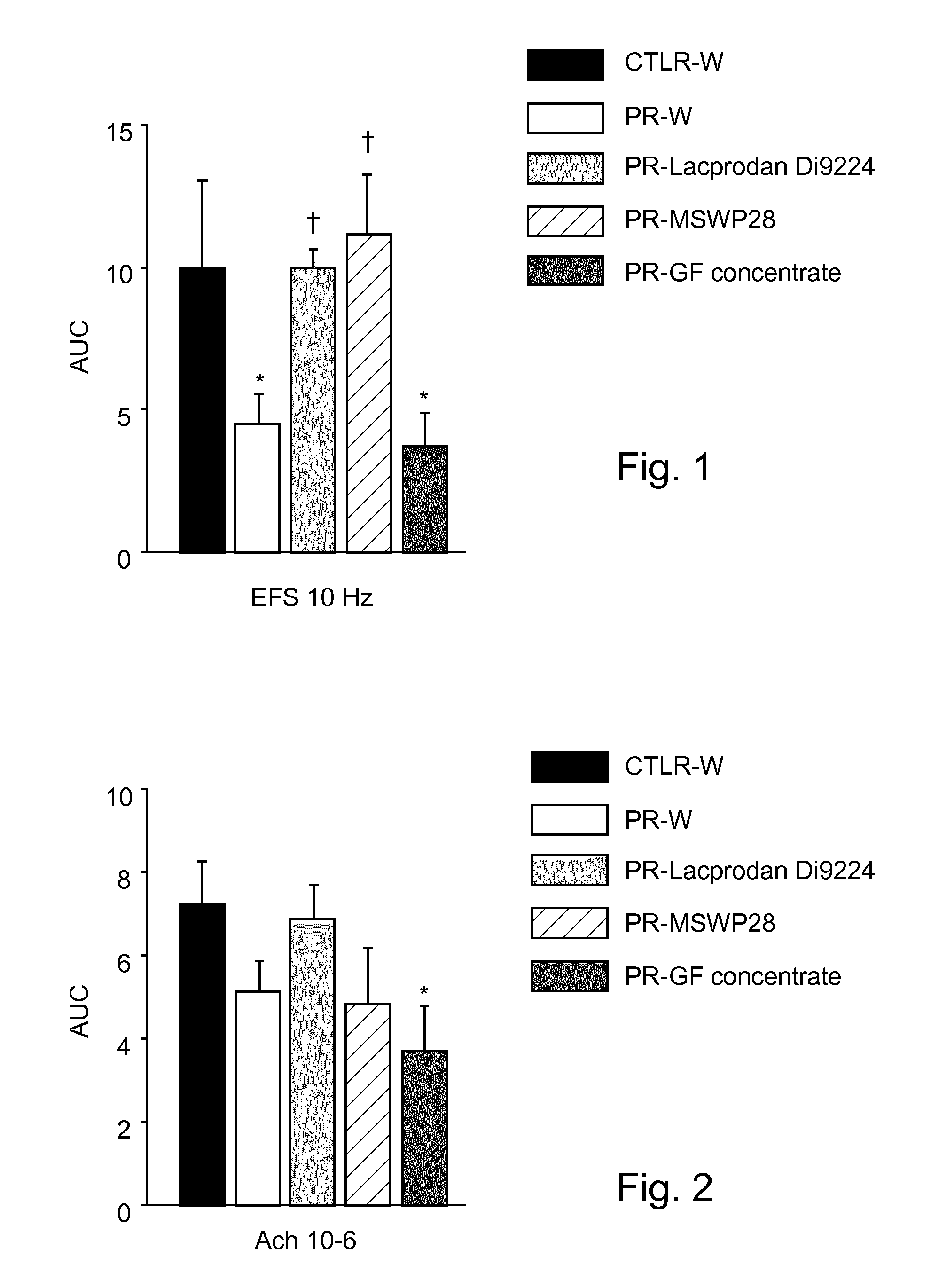Use of a sweet whey containing infant formula for promoting the postnatal neuronal development of the infant gastrointestinal tract, and the establishment of the intestinal functions that it controls
a technology of enteric neuronal development and sweet whey protein, which is applied in the directions of food ingredient functions, medical preparations, unknown materials, etc., can solve the problems of delayed establishment and adequate functioning of major gastrointestinal functions, and achieve the promotion of neuronal cell development, functionality, survival, and protein expression. , to achieve the effect of promoting neuronal survival, promoting neuronal cell development, and promoting neuronal survival
- Summary
- Abstract
- Description
- Claims
- Application Information
AI Technical Summary
Benefits of technology
Problems solved by technology
Method used
Image
Examples
example 1
Feeding and Sacrifice
[0139]Animal experiments were conducted under authorization no 2120 granted by the Office Vétérinaire Cantonal, Etat de Vaud. Two-month-old female Sprague-Dawley rats were obtained after one week of gestation from Harlan, Barcelona. On the day of their arrival, rat dams were placed in individual cages and randomly assigned either to control (CTRL) or protein restricted (PR) groups. Animals had access to food and water ad libitum and were maintained in a 12 hr light / dark cycle.
[0140]The diets of CTRL and PR dams are detailed in Table 1. CTRL dams received a control diet containing 20% of proteins (casein) fitting standard rat protein requirement during gestation (Reeves, P. G., Nielsen, F. H., Fahey, G. C., JR. 1993. AIN-93 Purified Diets for Laboratory Rodents: Final Report of the American Institute of Nutrition Ad Hoc Writing Committee on the Reformulation of the AIN-76A Rodent Diet. J. Nutr. 123:1939-1951.) PR dams received a PR diet containing 10%...
example 2
[0159]An example of the composition of an infant formula for use according to the present invention is given below. This composition is given by way of illustration only. The protein source is a mixture of 60% MSWP28 and 40% casein.
Nutrientper 100 kcalper litreEnergy (kcal)100670Protein (g)1.8312.3Fat (g)5.335.7Linoleic acid (g)0.795.3α-Linolenic acid (mg)101675Lactose (g)11.274.7Prebiotic (100% GOS) (g)0.644.3Minerals (g)0.372.5Na (mg)23150K (mg)89590Cl (mg)64430Ca (mg)62410P (mg)31210Mg (mg)750Mn (μg)850Se (μg)213Vitamin A (μg RE)105700Vitamin D (μg)1.510Vitamin E (mg TE)0.85.4Vitamin K1 (μg)854Vitamin C (mg)1067Vitamin B1 (mg)0.070.47Vitamin B2 (mg)0.151.0Niacin (mg)16.7Vitamin B6 (mg)0.0750.50Folic acid (μg)960Pantothenic acid (mg)0.453Vitamin B12 (μg)0.32Biotin (μg)2.215Choline (mg)1067Fe (mg)1.28I (μg)15100Cu (mg)0.060.4Zn (mg)0.755Bifidobacterium longum2 × 107 cfu / g of powderBB536
PUM
 Login to View More
Login to View More Abstract
Description
Claims
Application Information
 Login to View More
Login to View More - R&D
- Intellectual Property
- Life Sciences
- Materials
- Tech Scout
- Unparalleled Data Quality
- Higher Quality Content
- 60% Fewer Hallucinations
Browse by: Latest US Patents, China's latest patents, Technical Efficacy Thesaurus, Application Domain, Technology Topic, Popular Technical Reports.
© 2025 PatSnap. All rights reserved.Legal|Privacy policy|Modern Slavery Act Transparency Statement|Sitemap|About US| Contact US: help@patsnap.com

